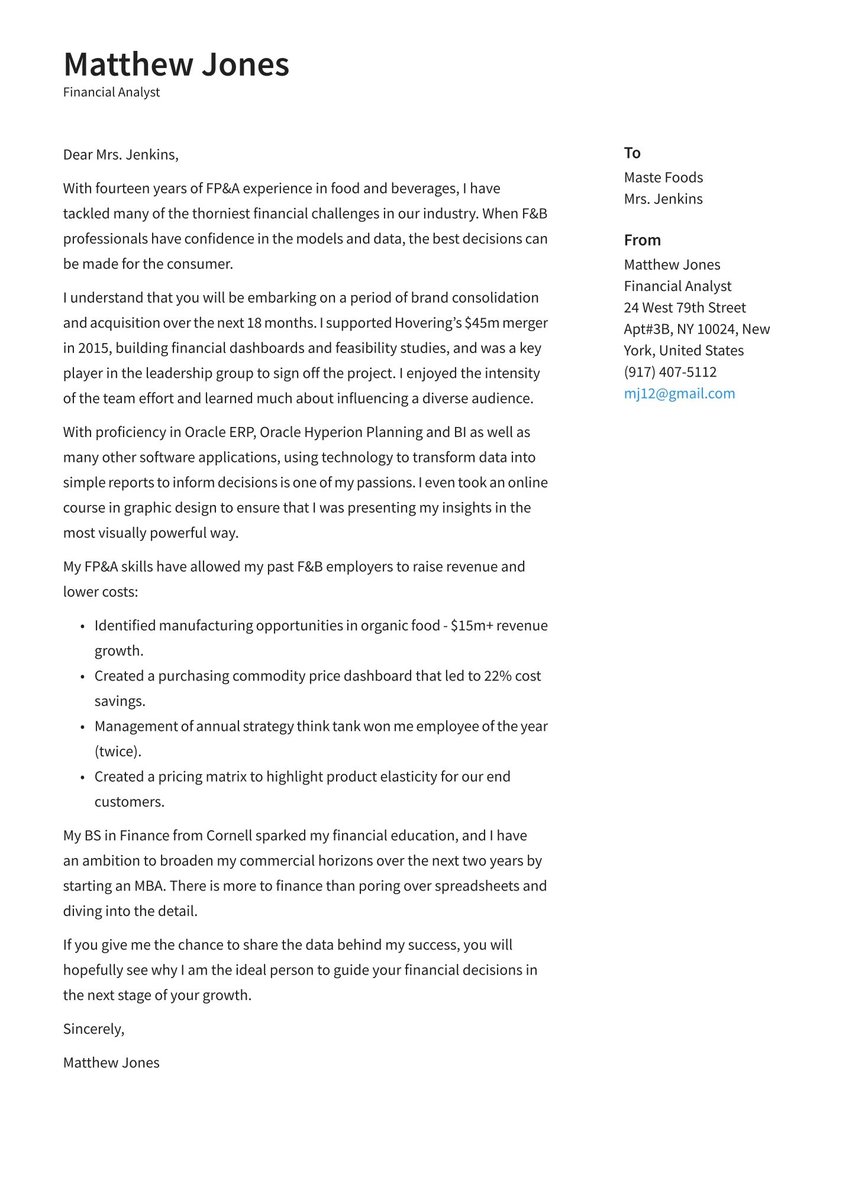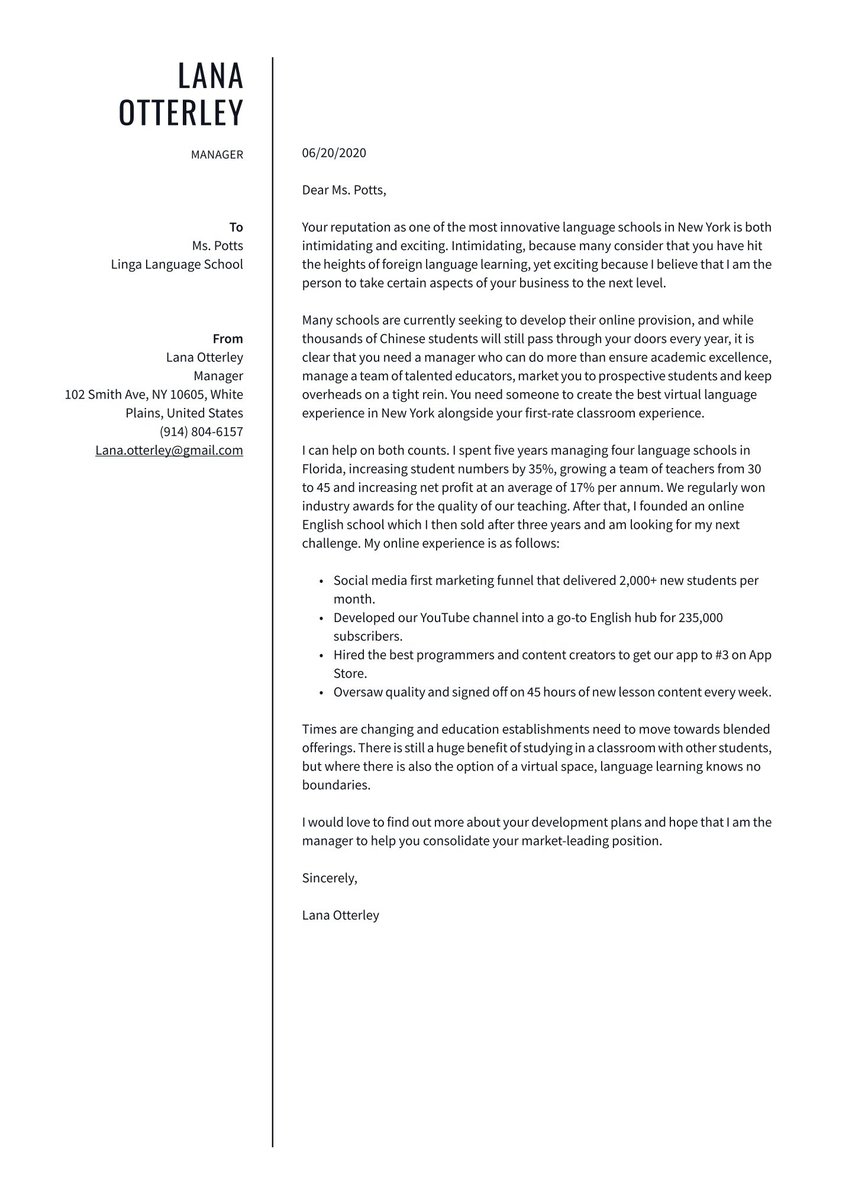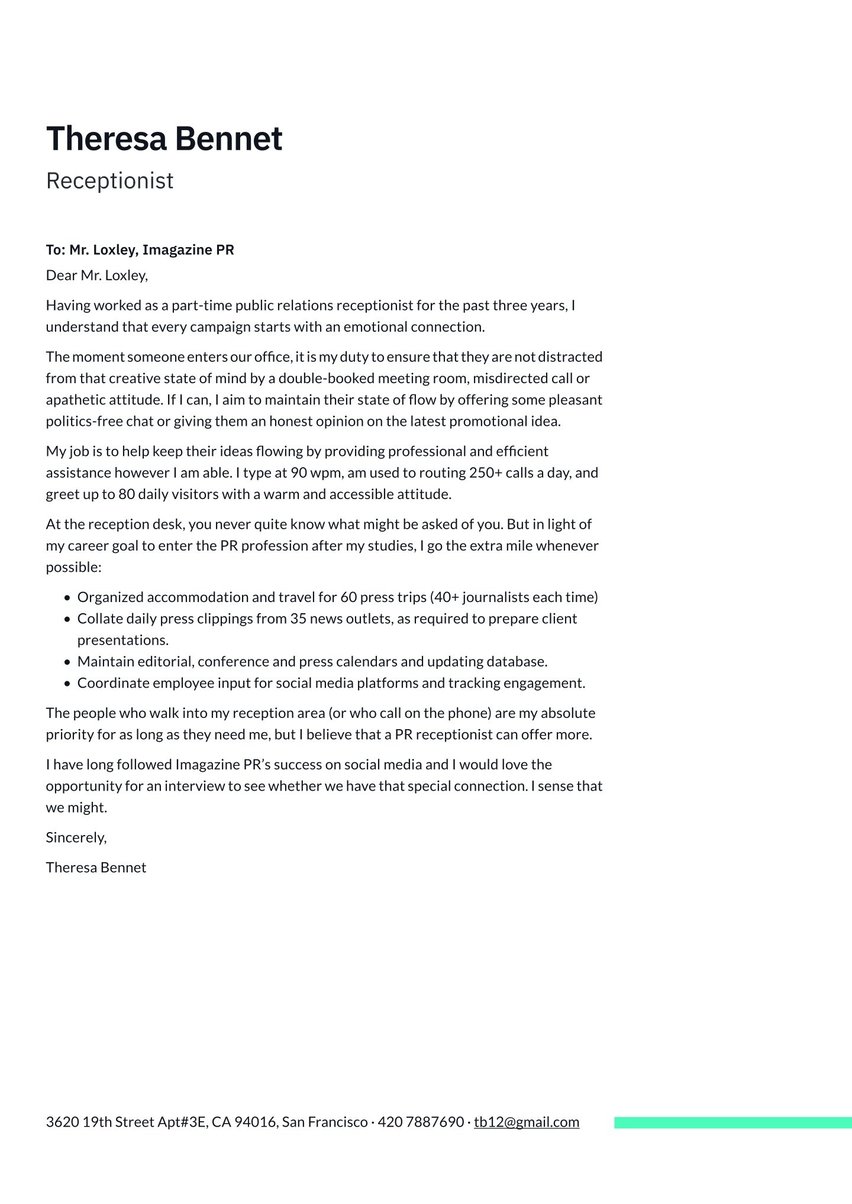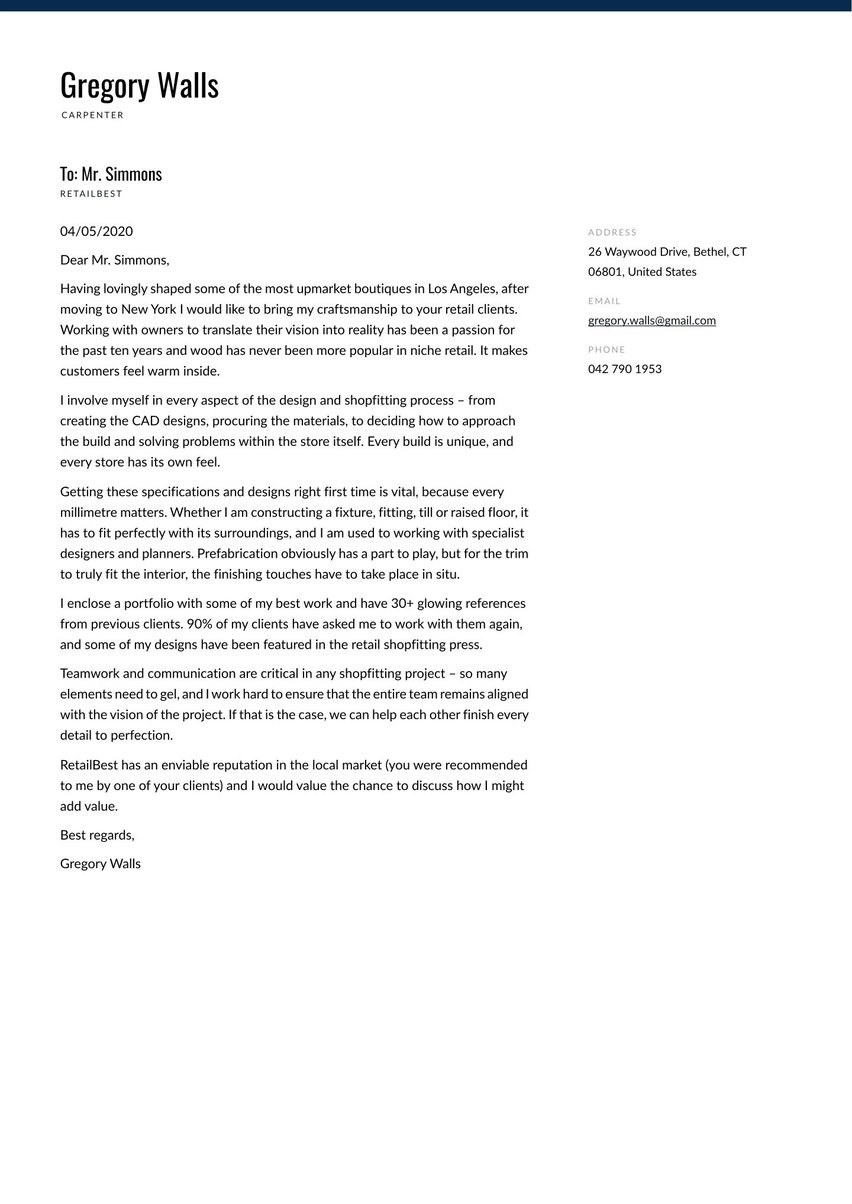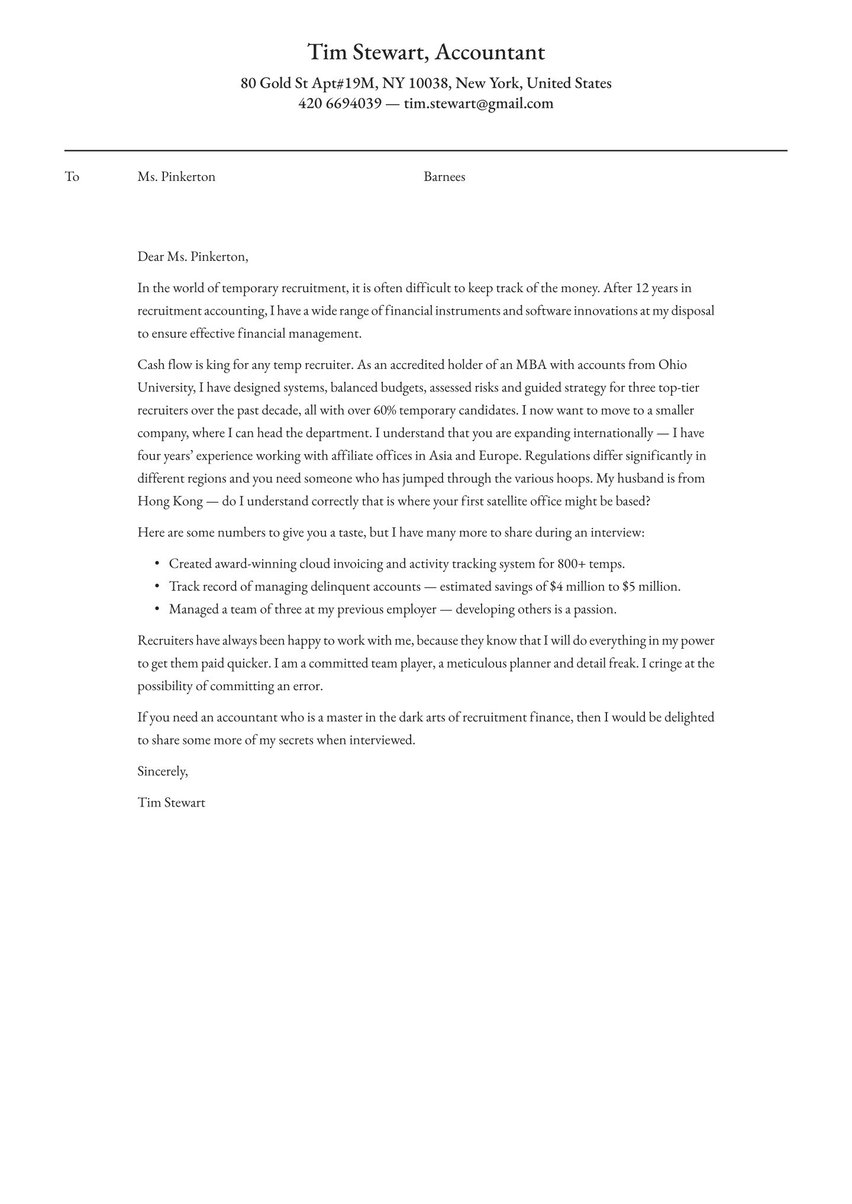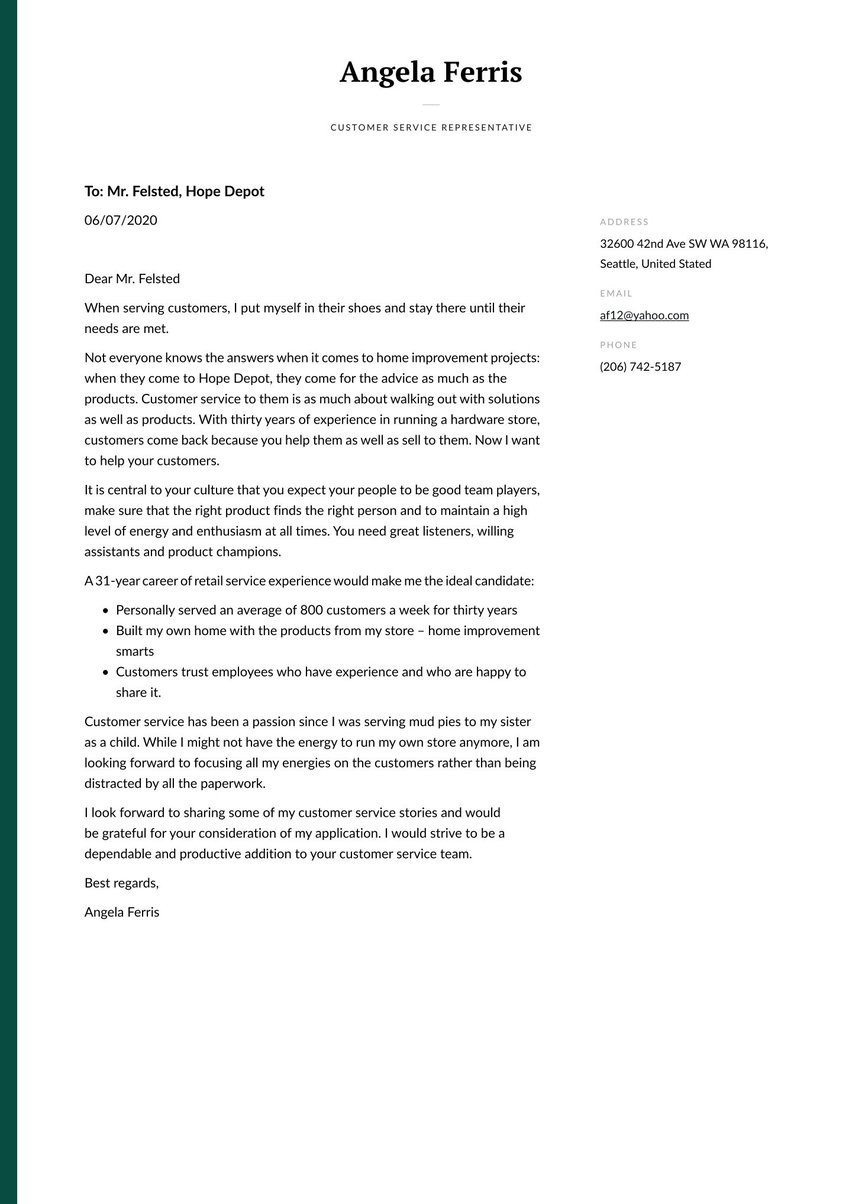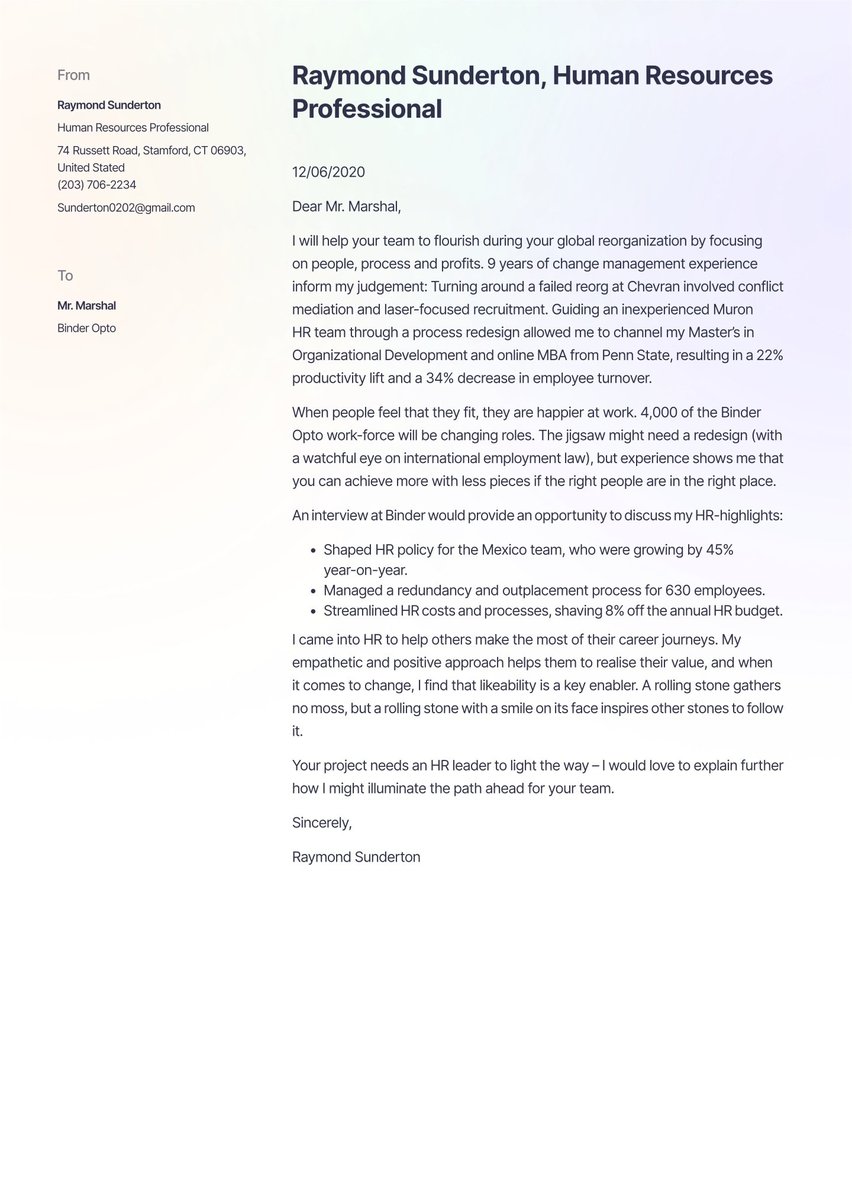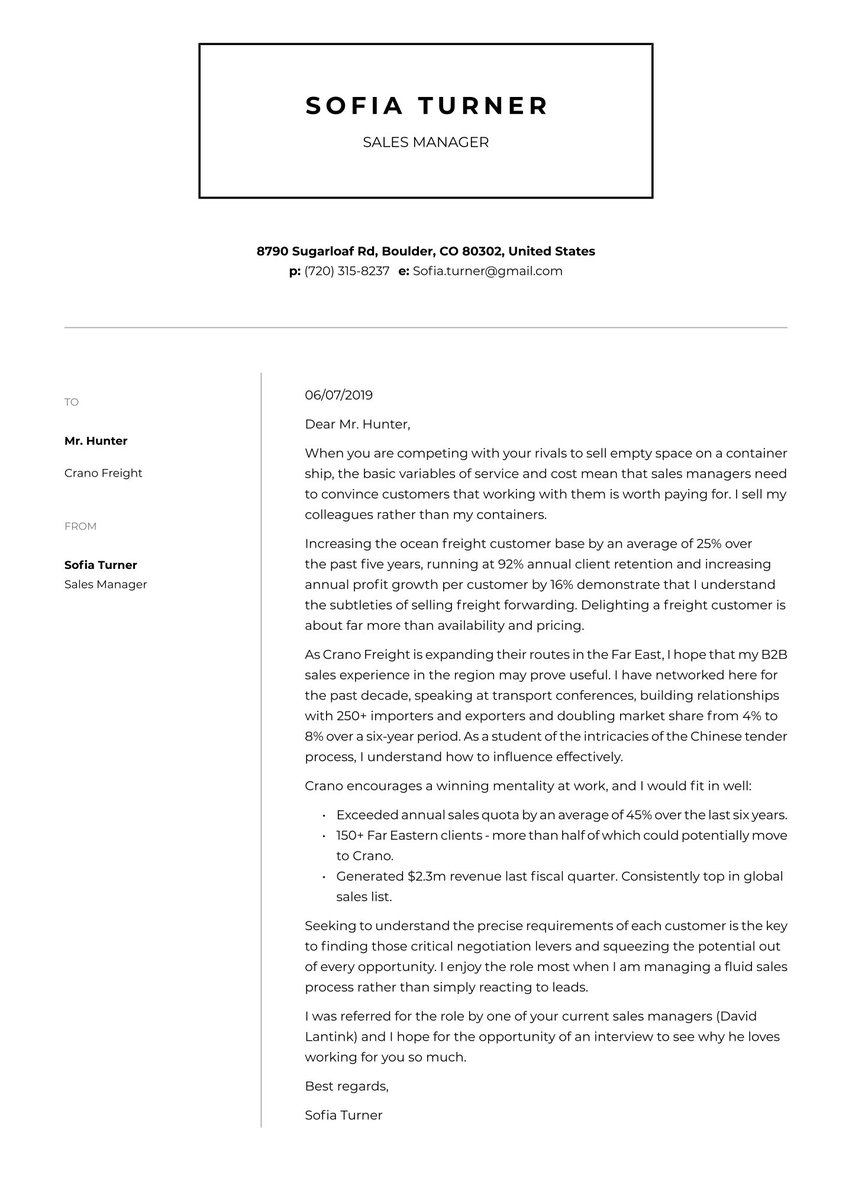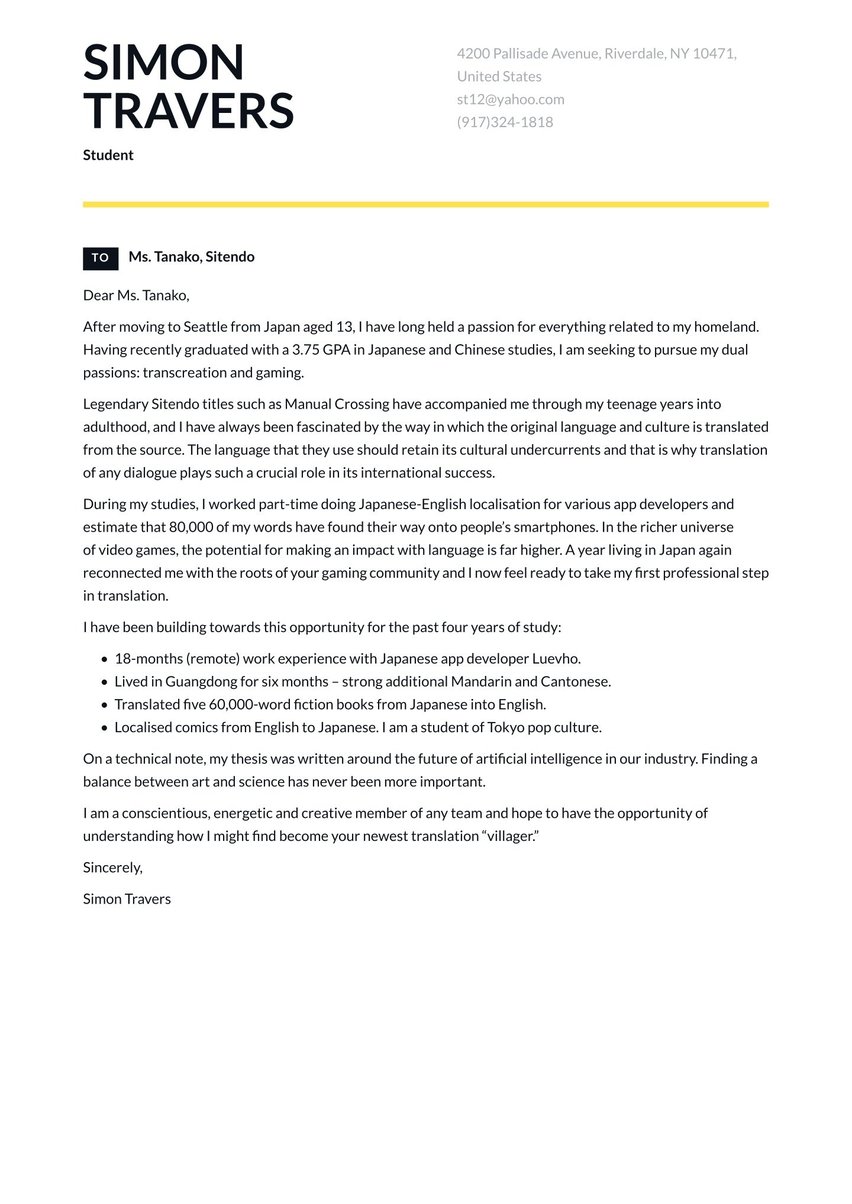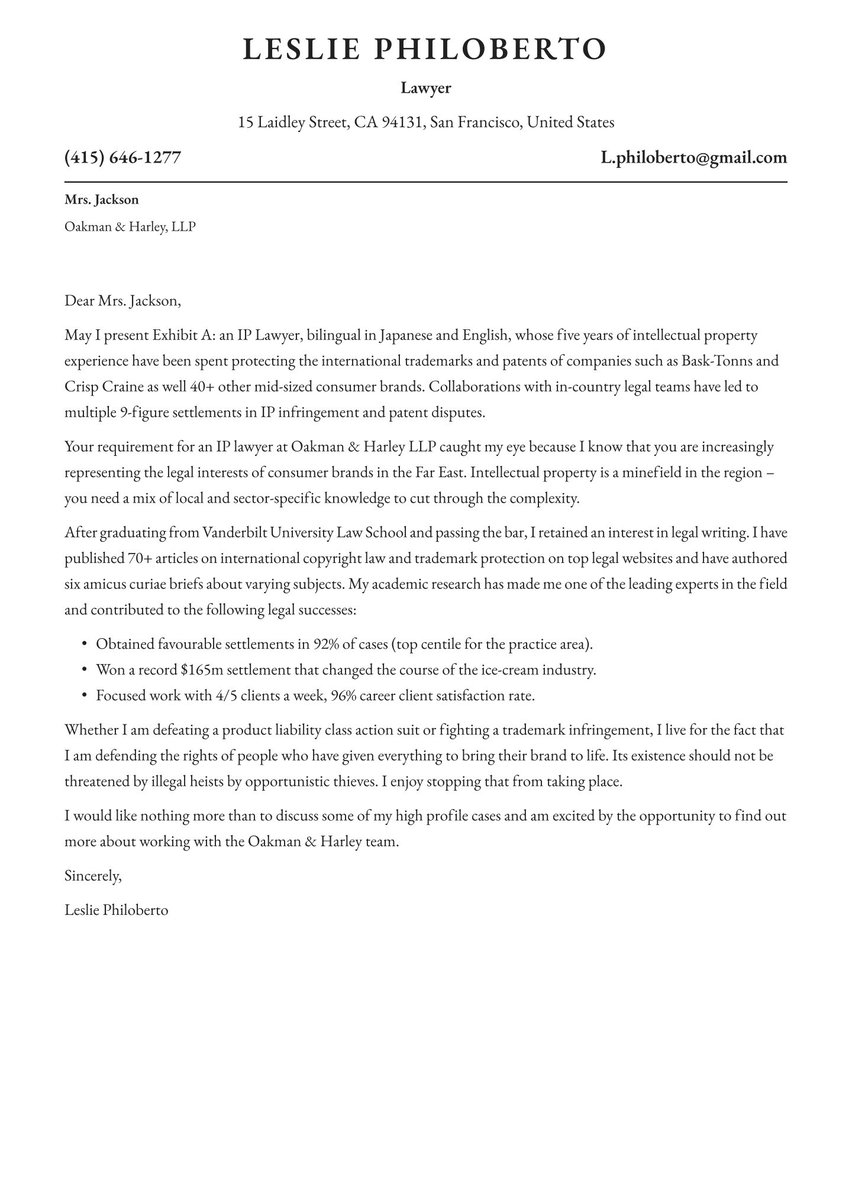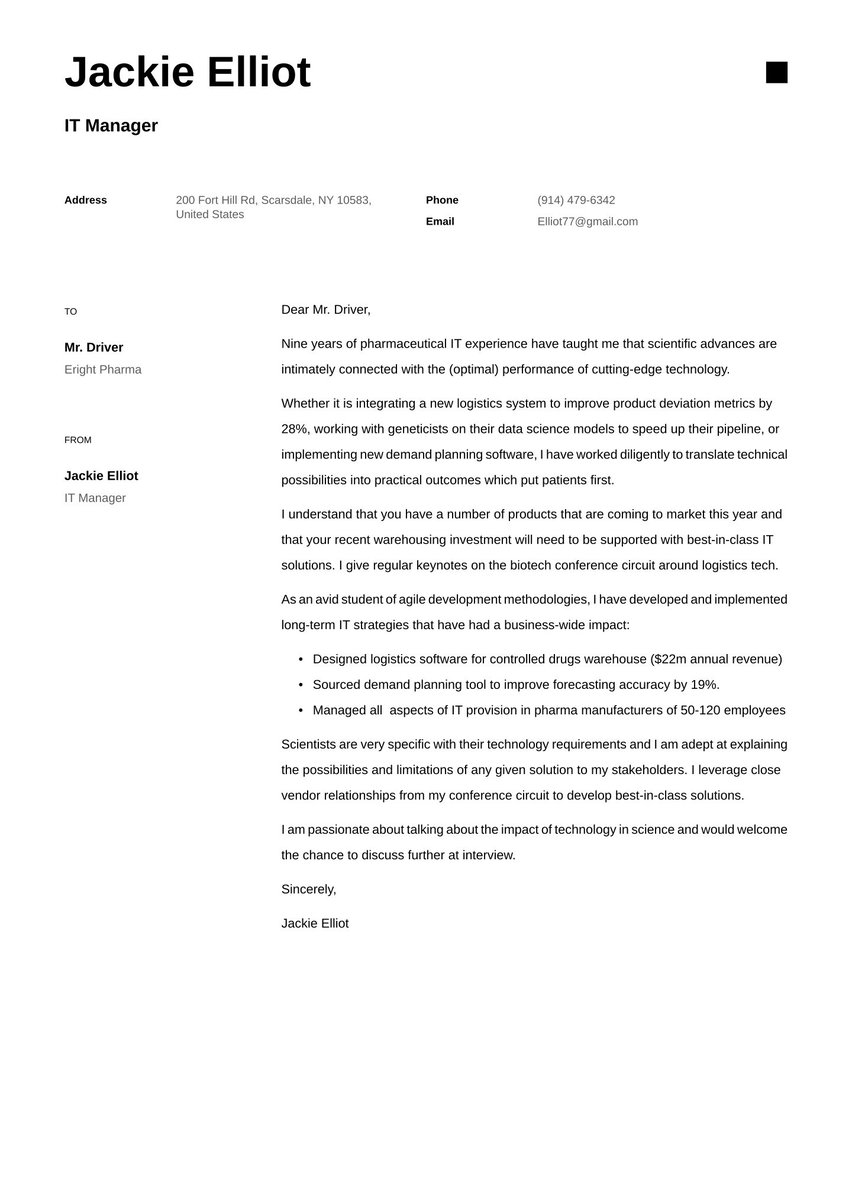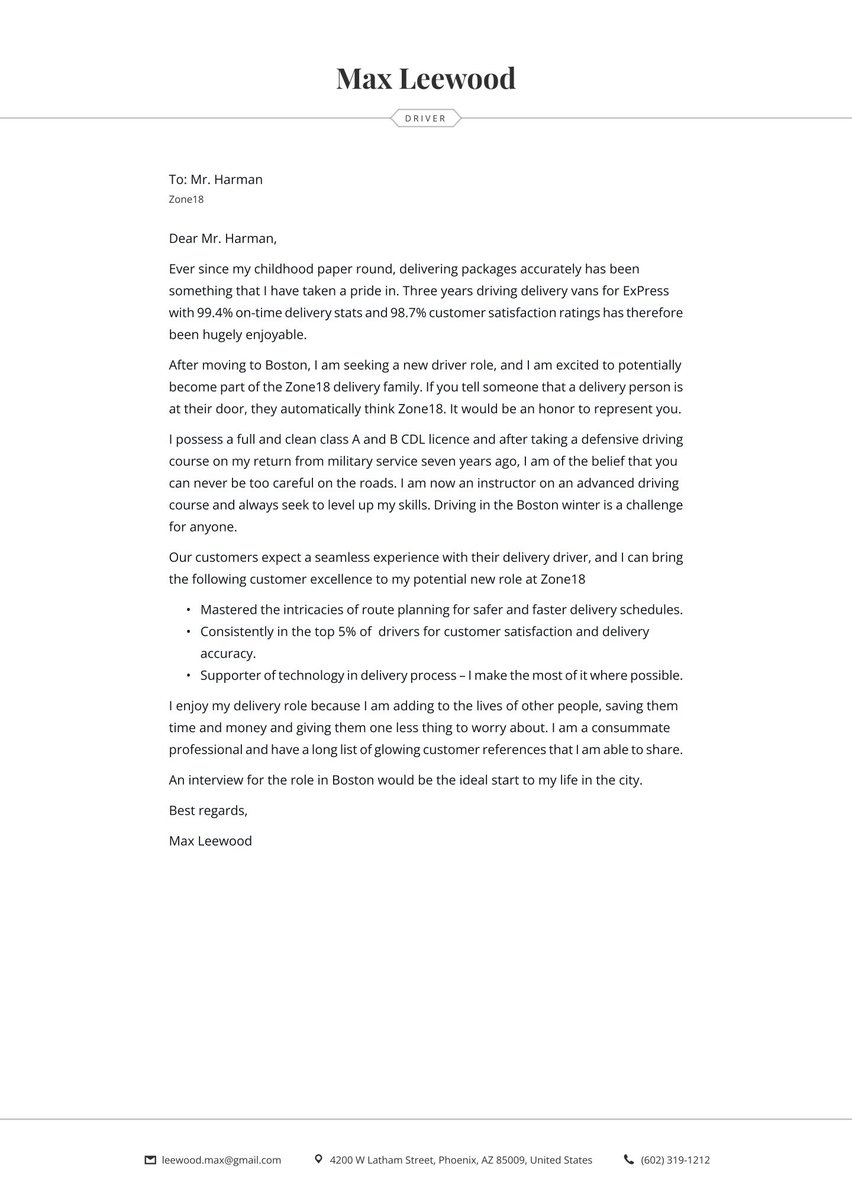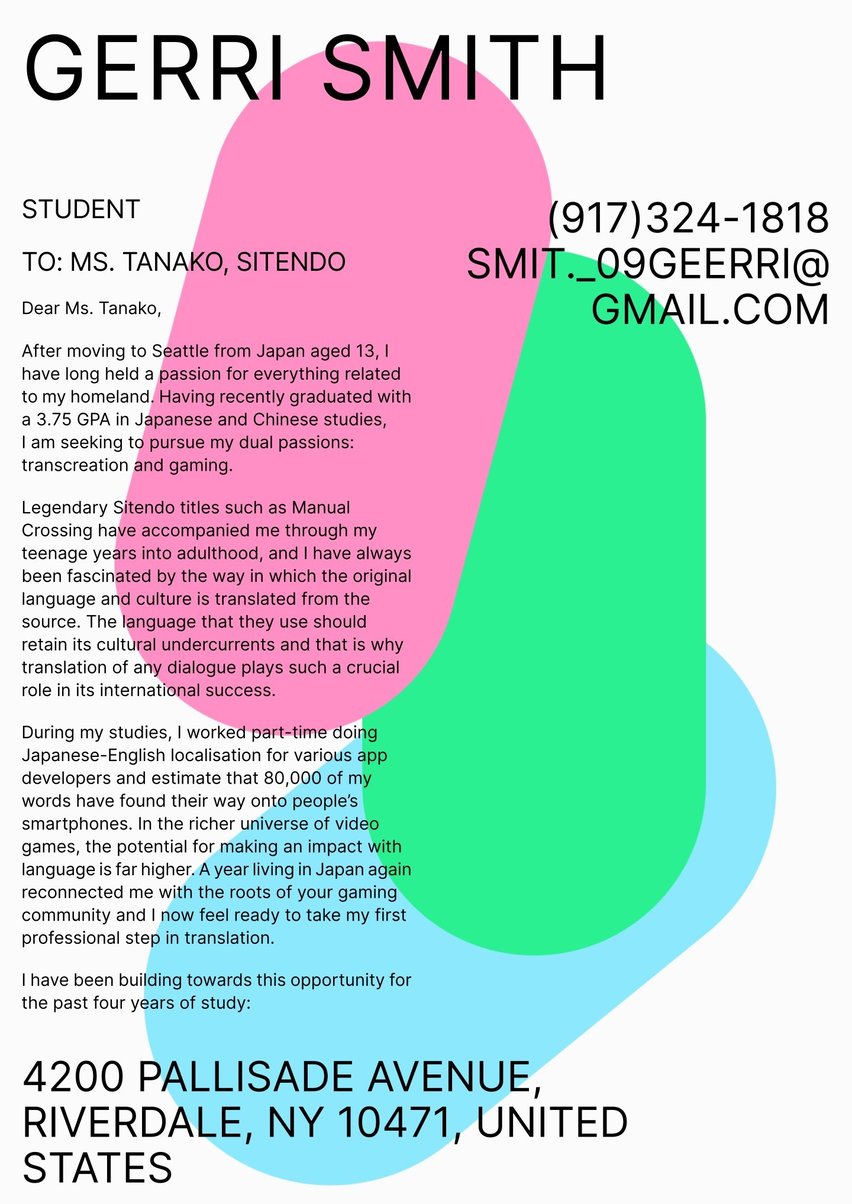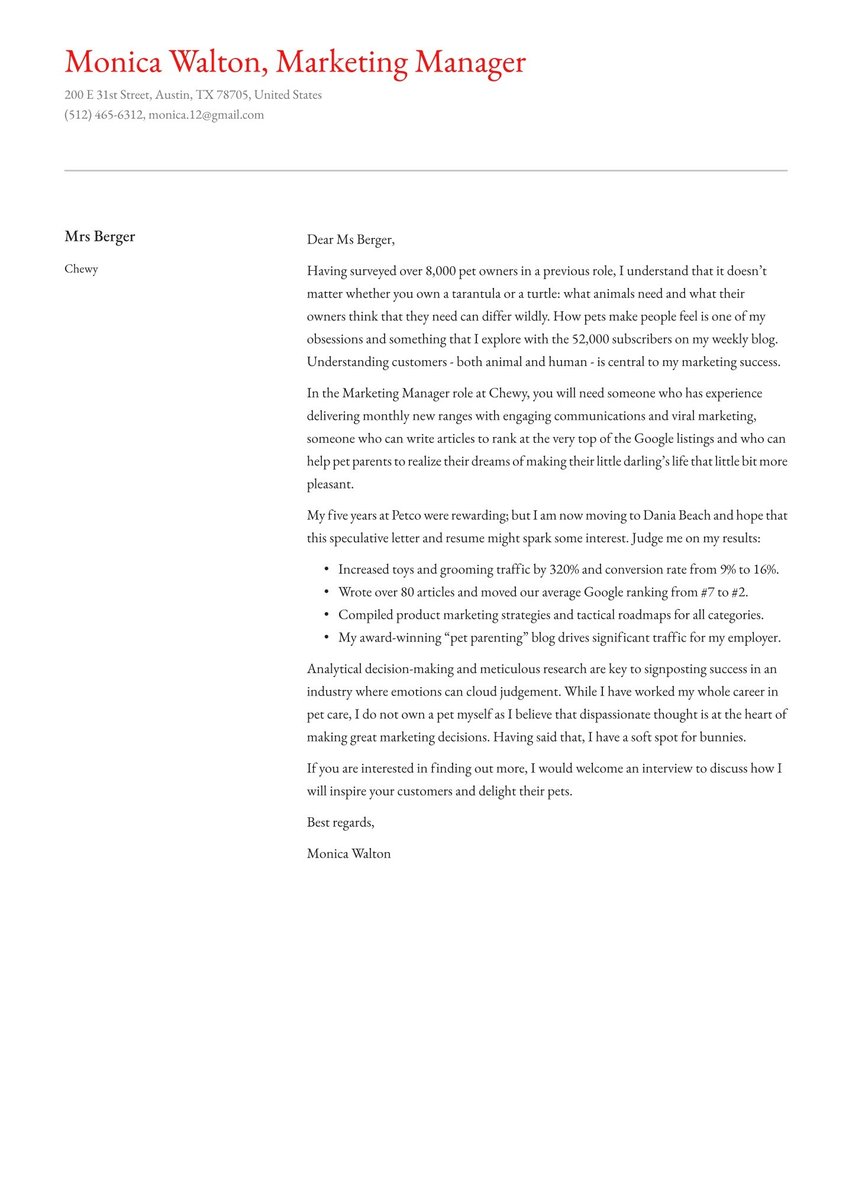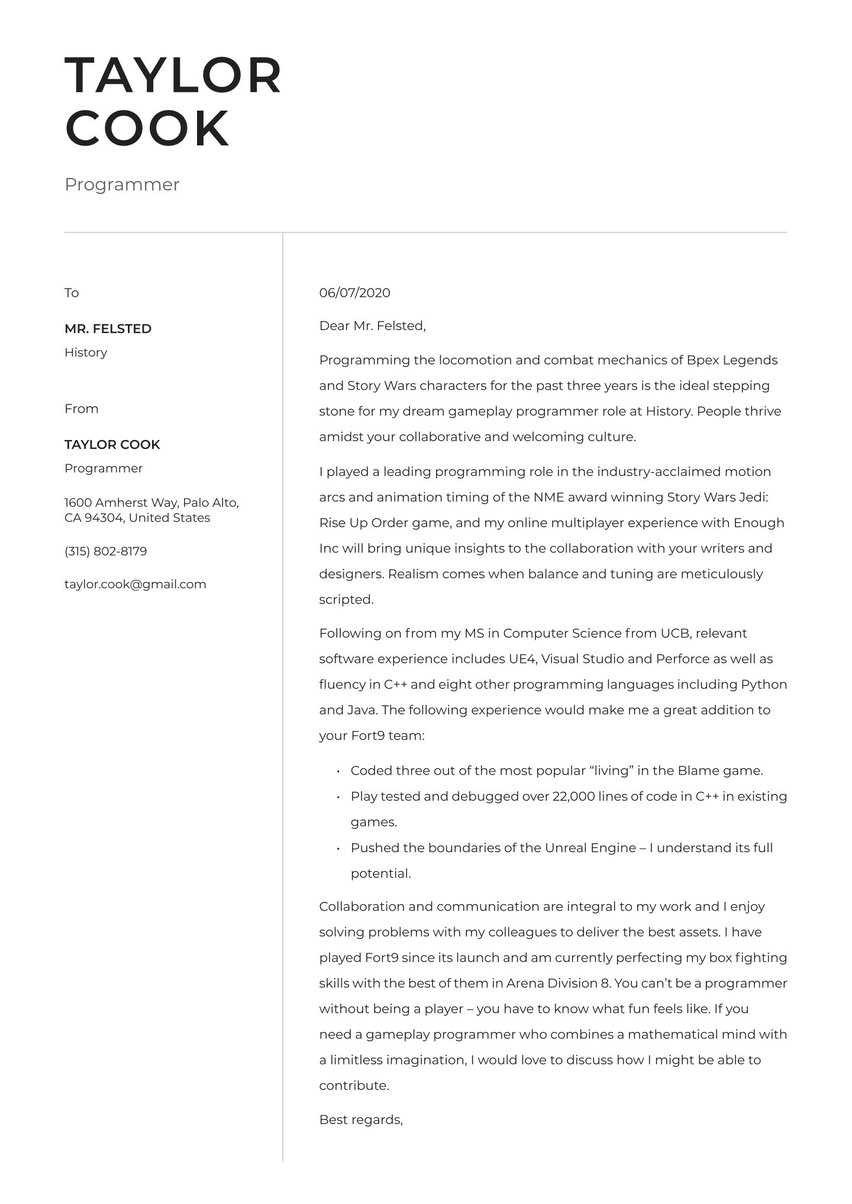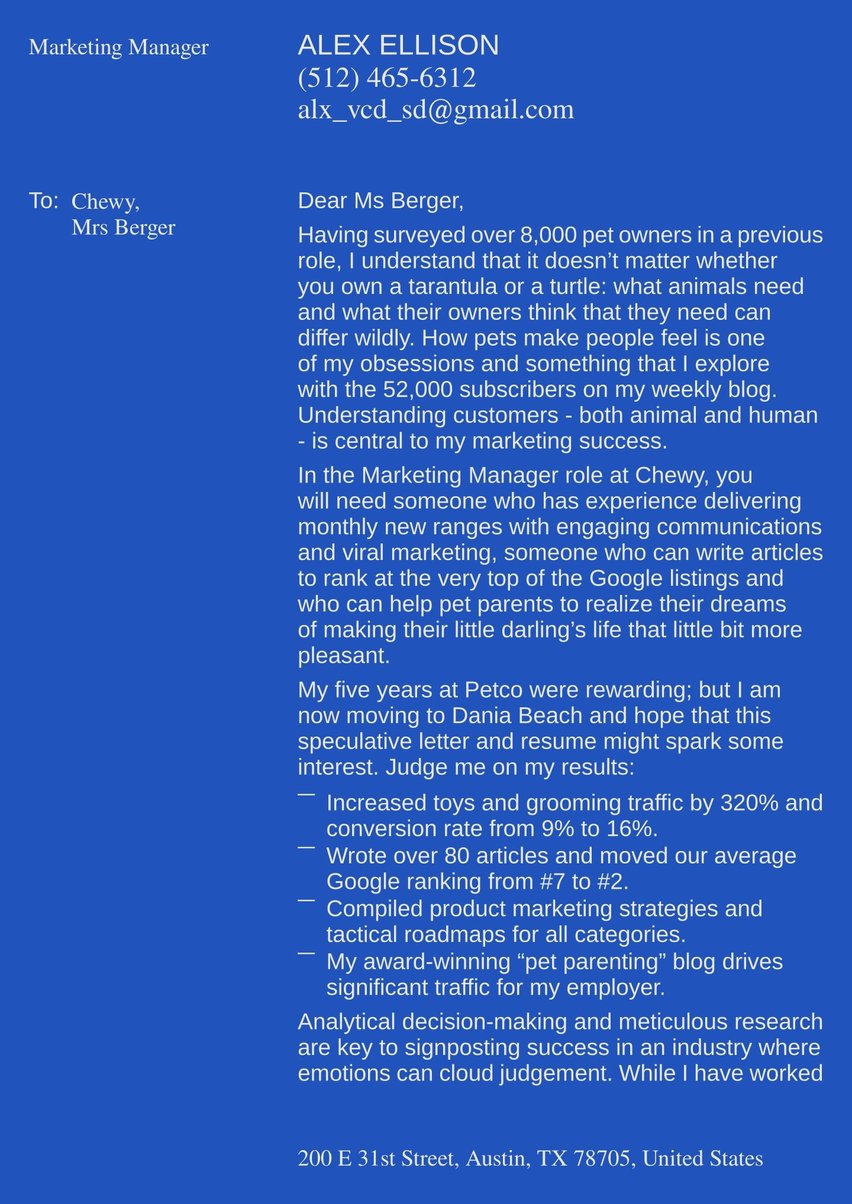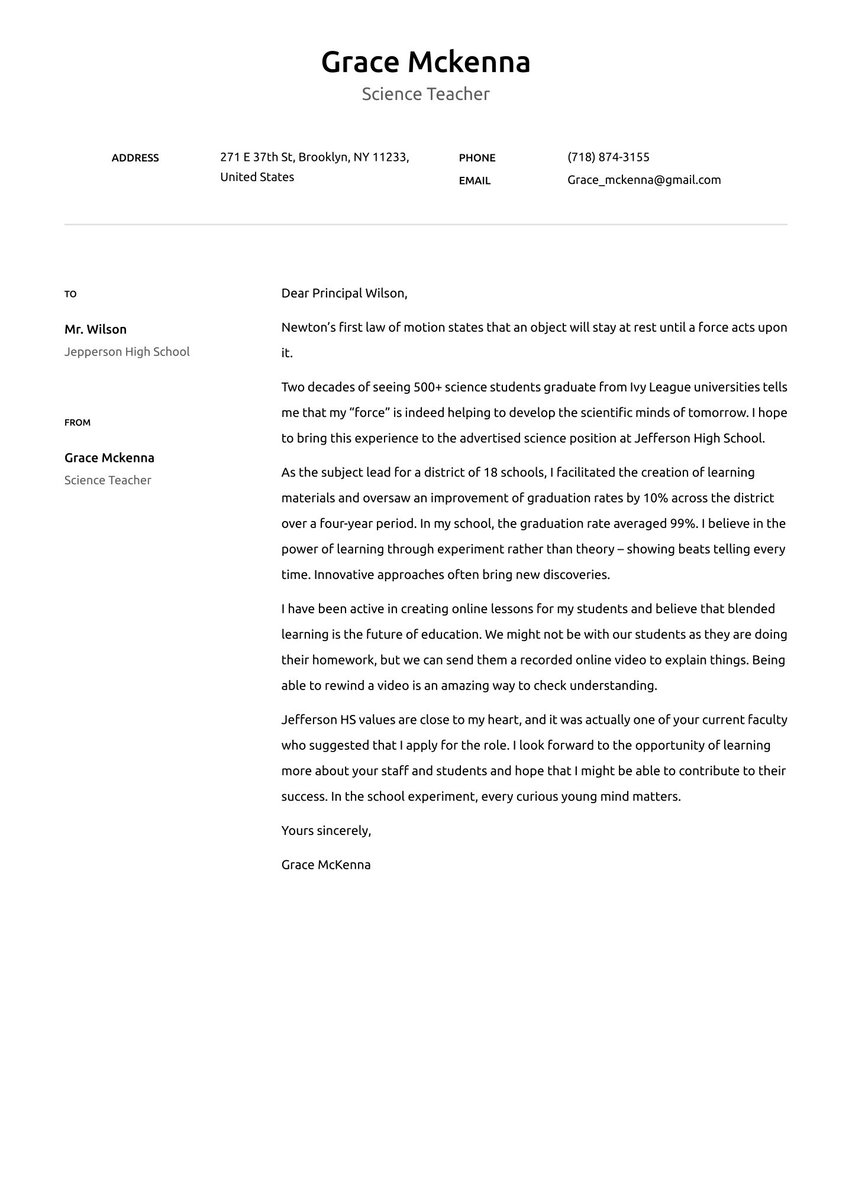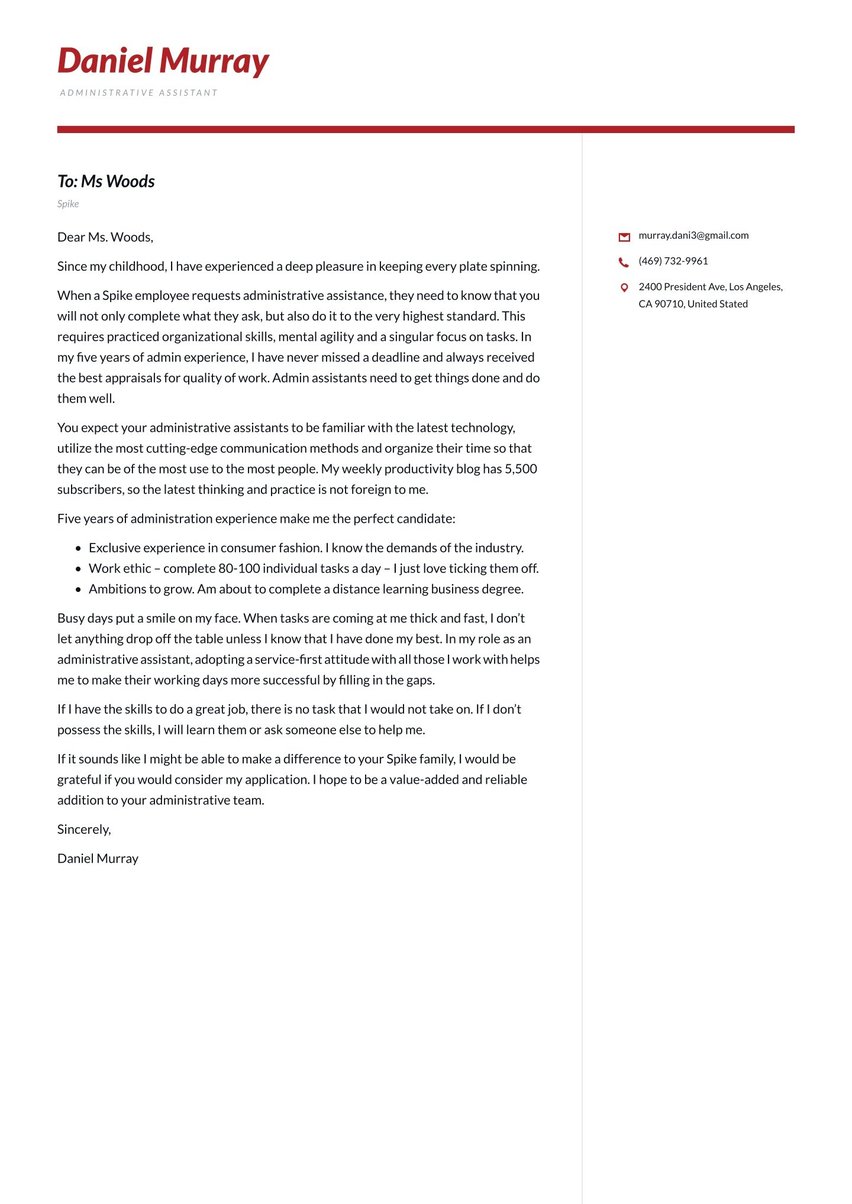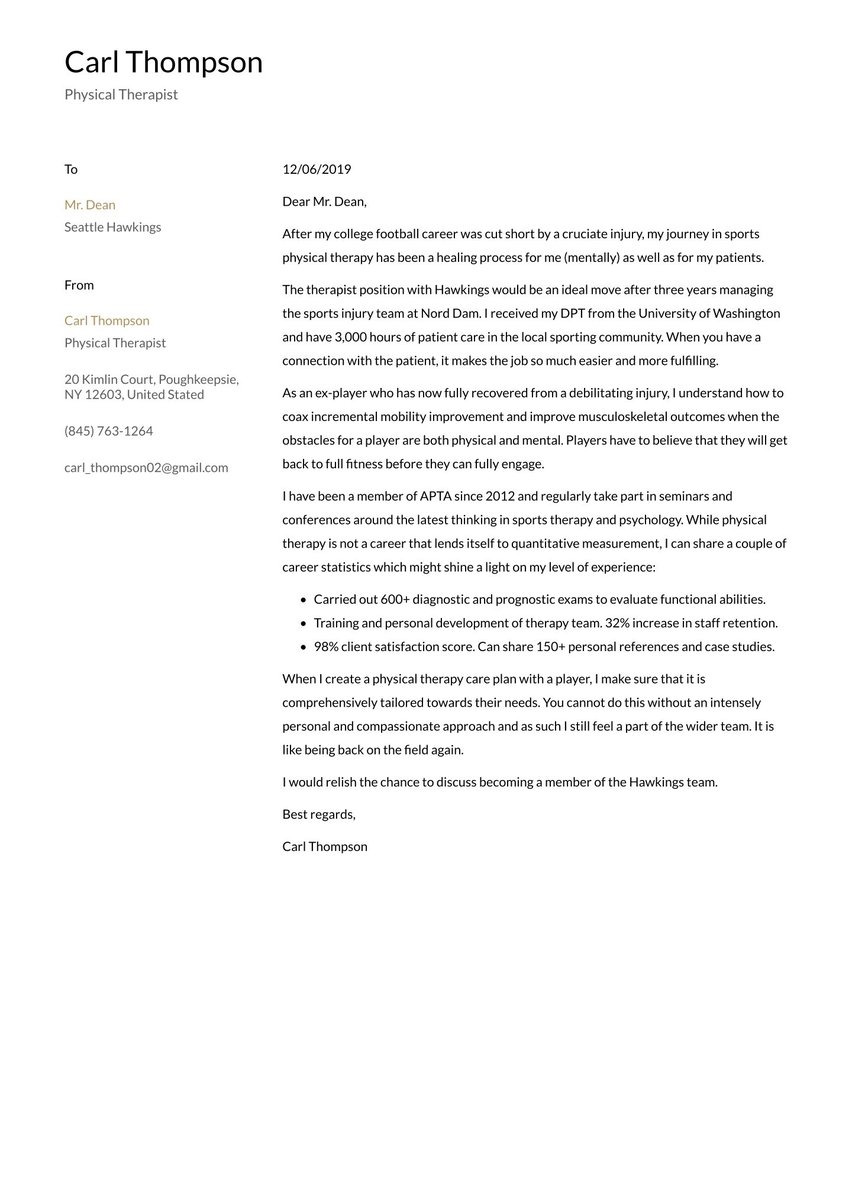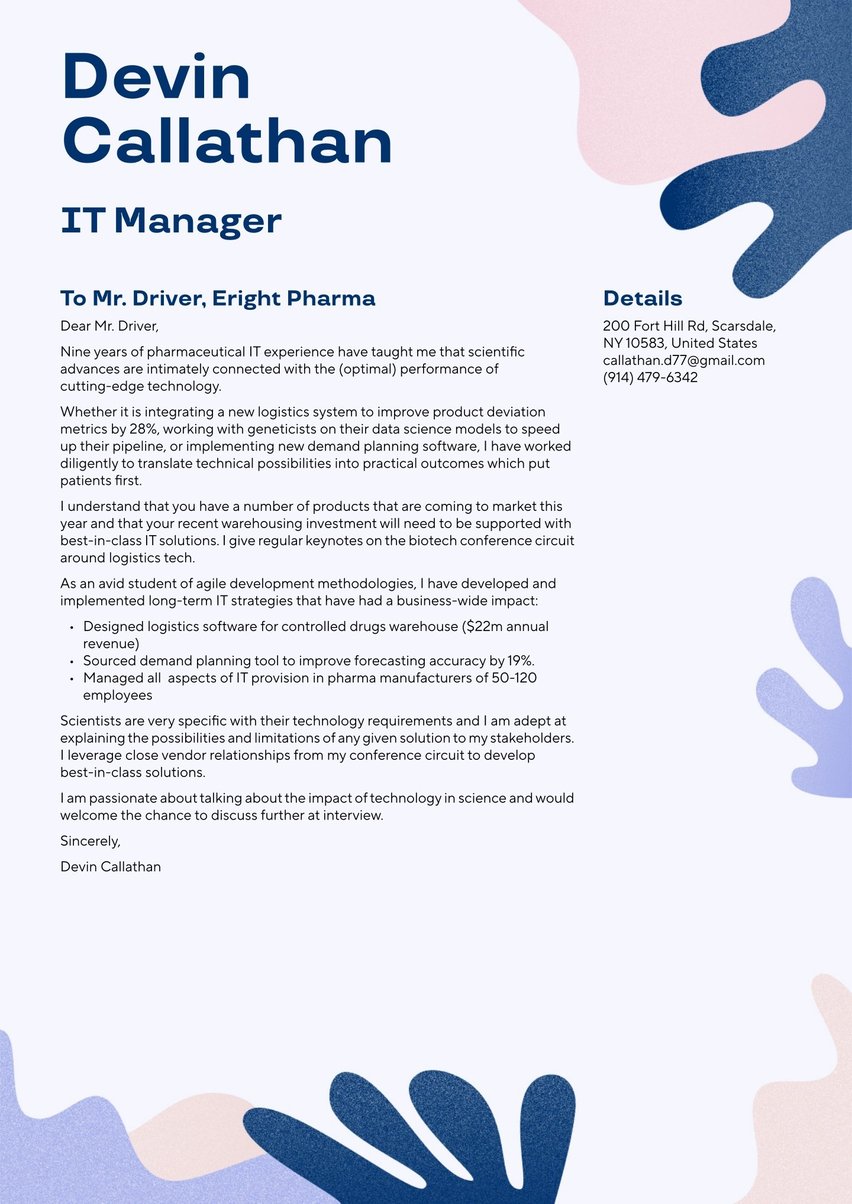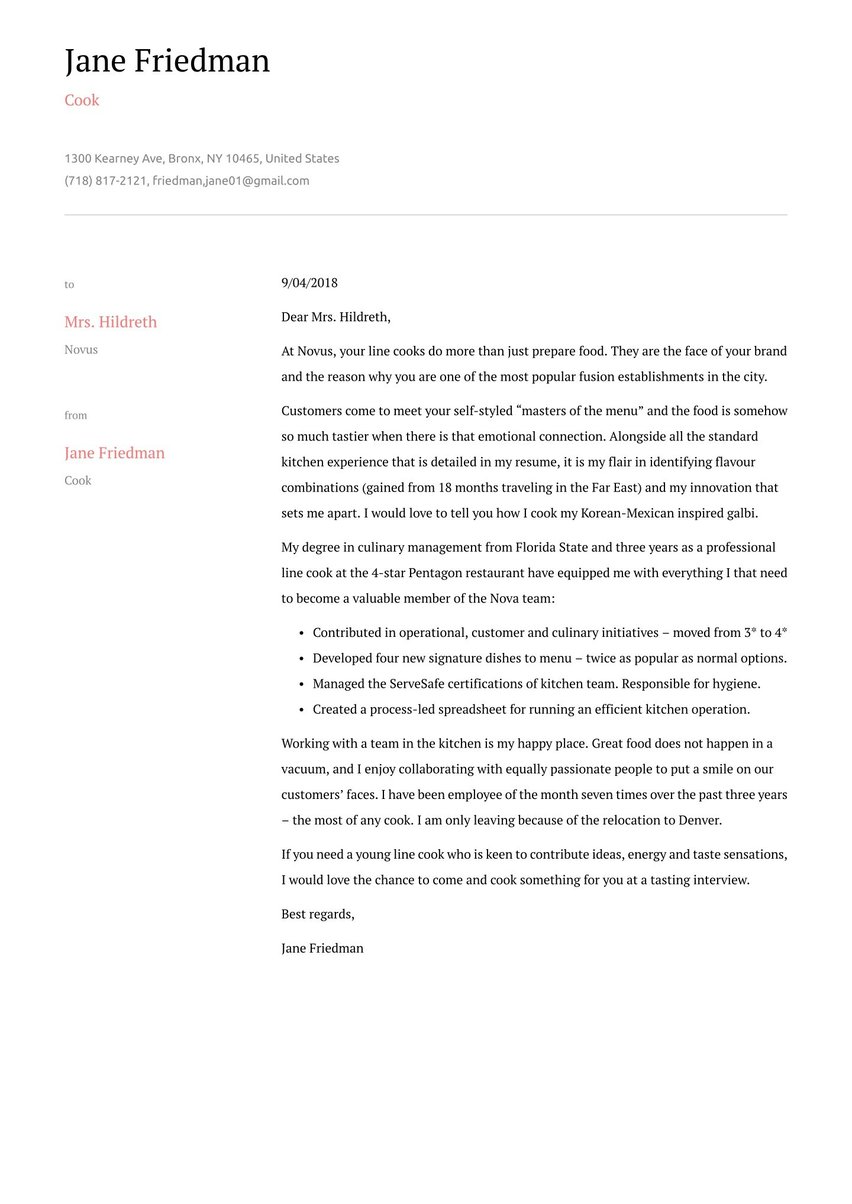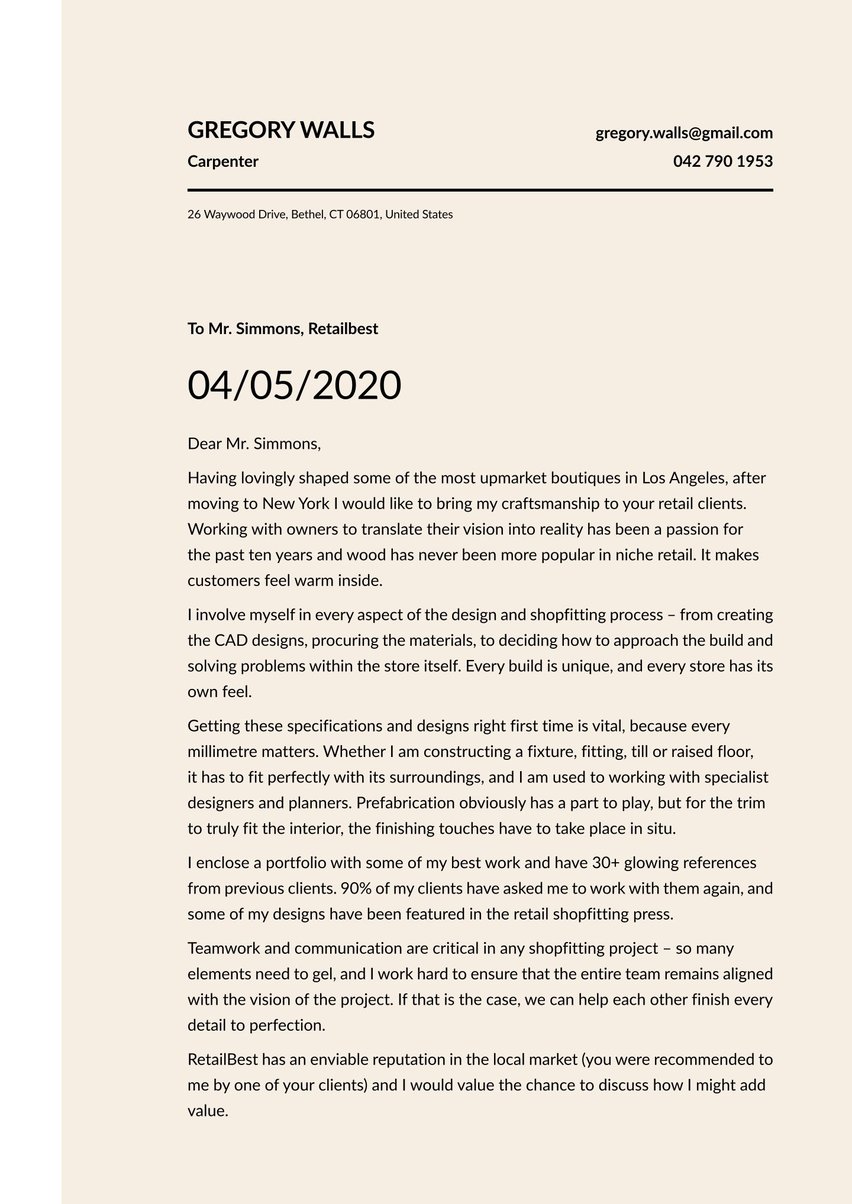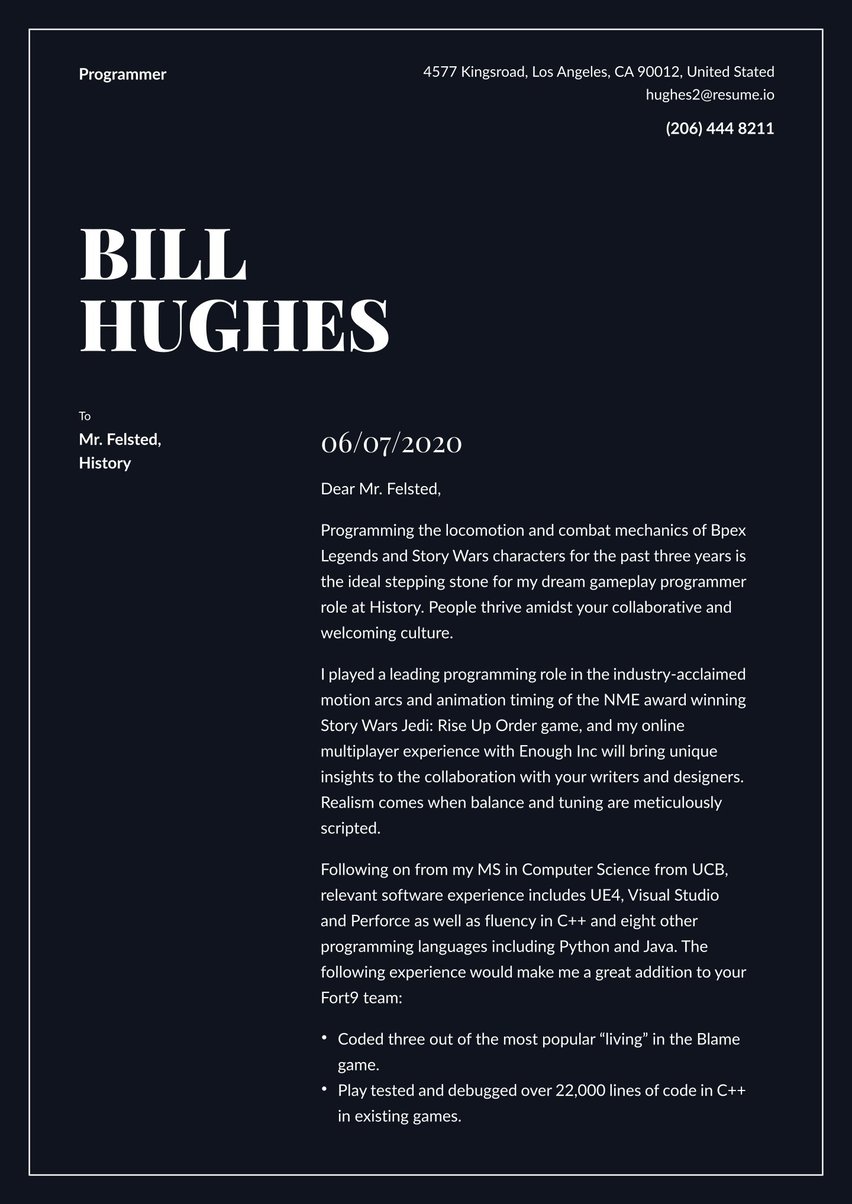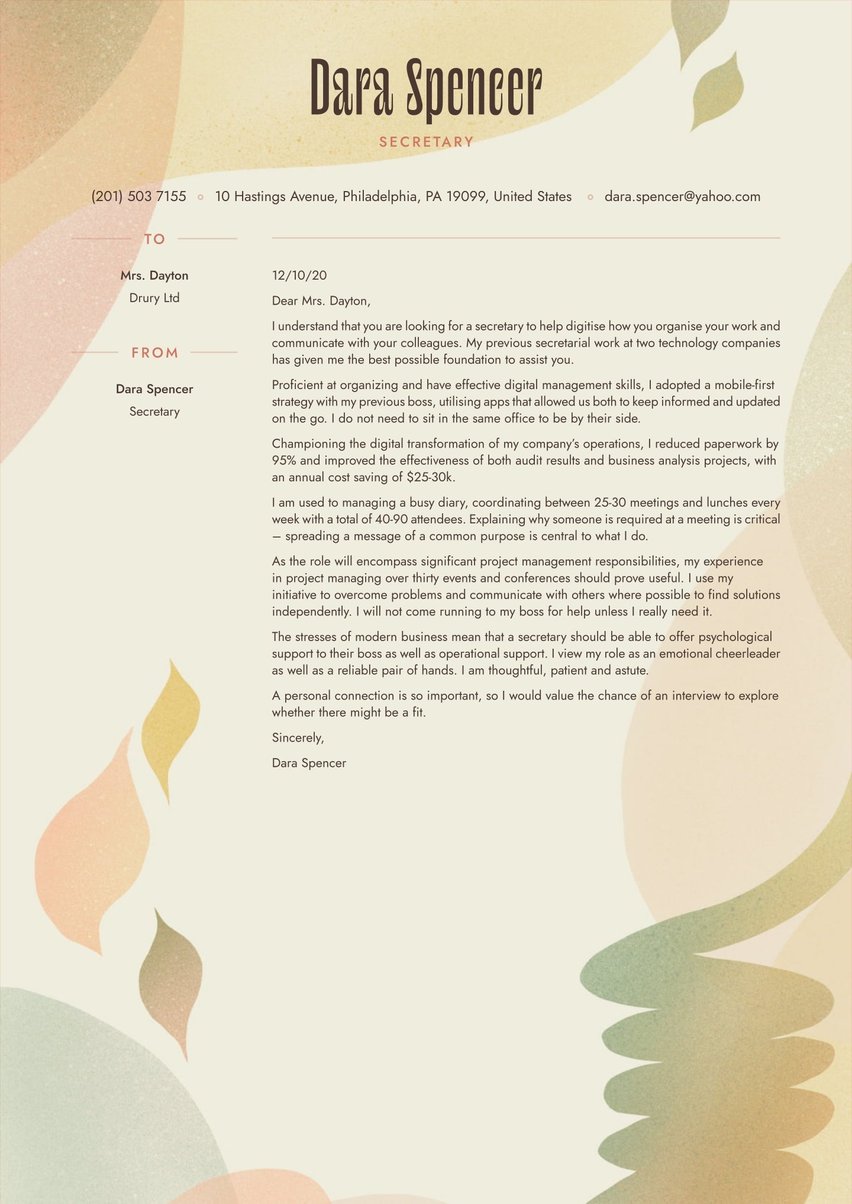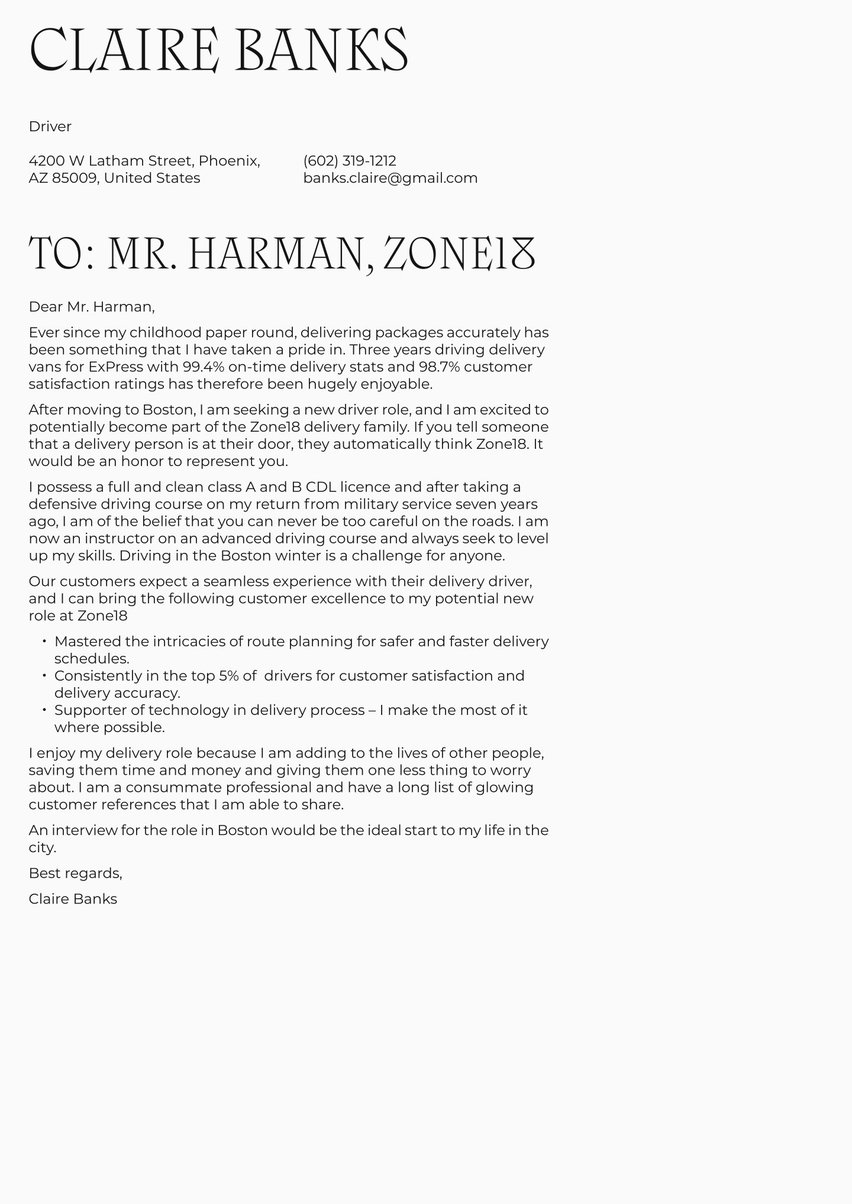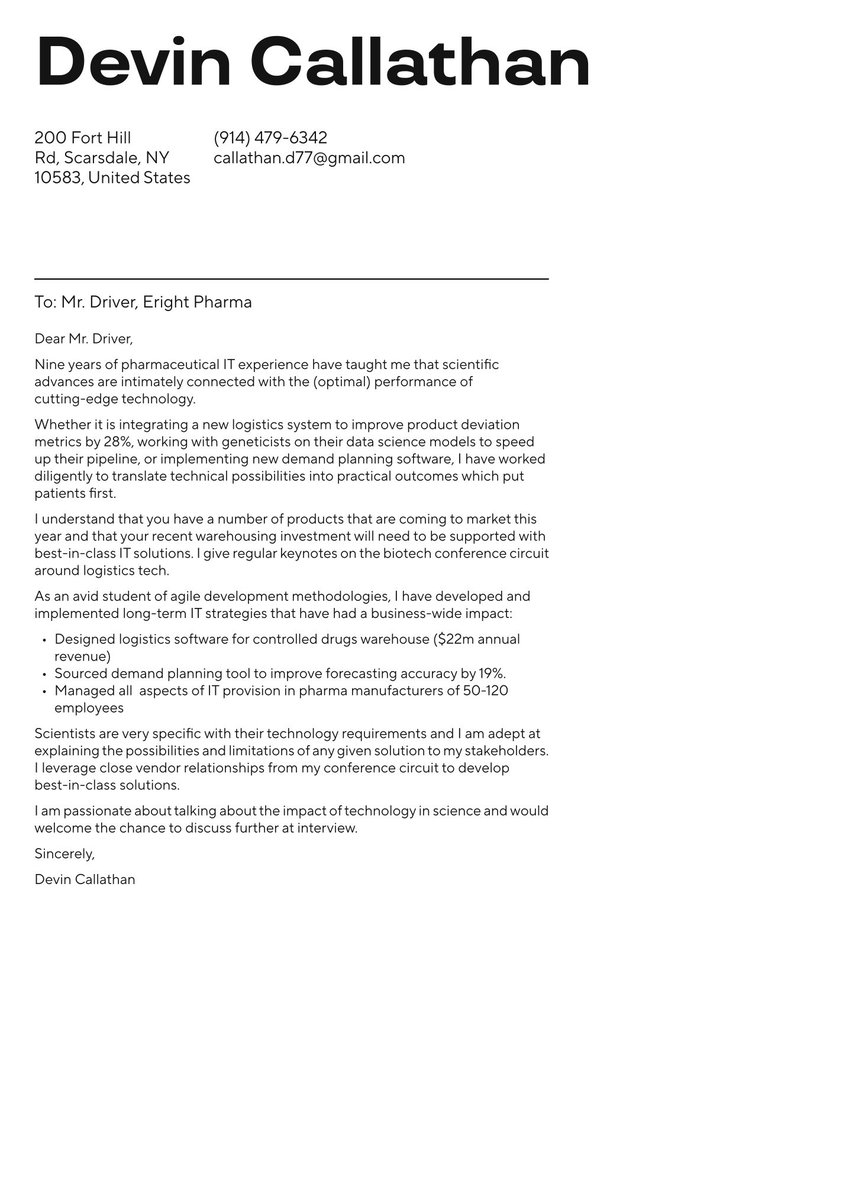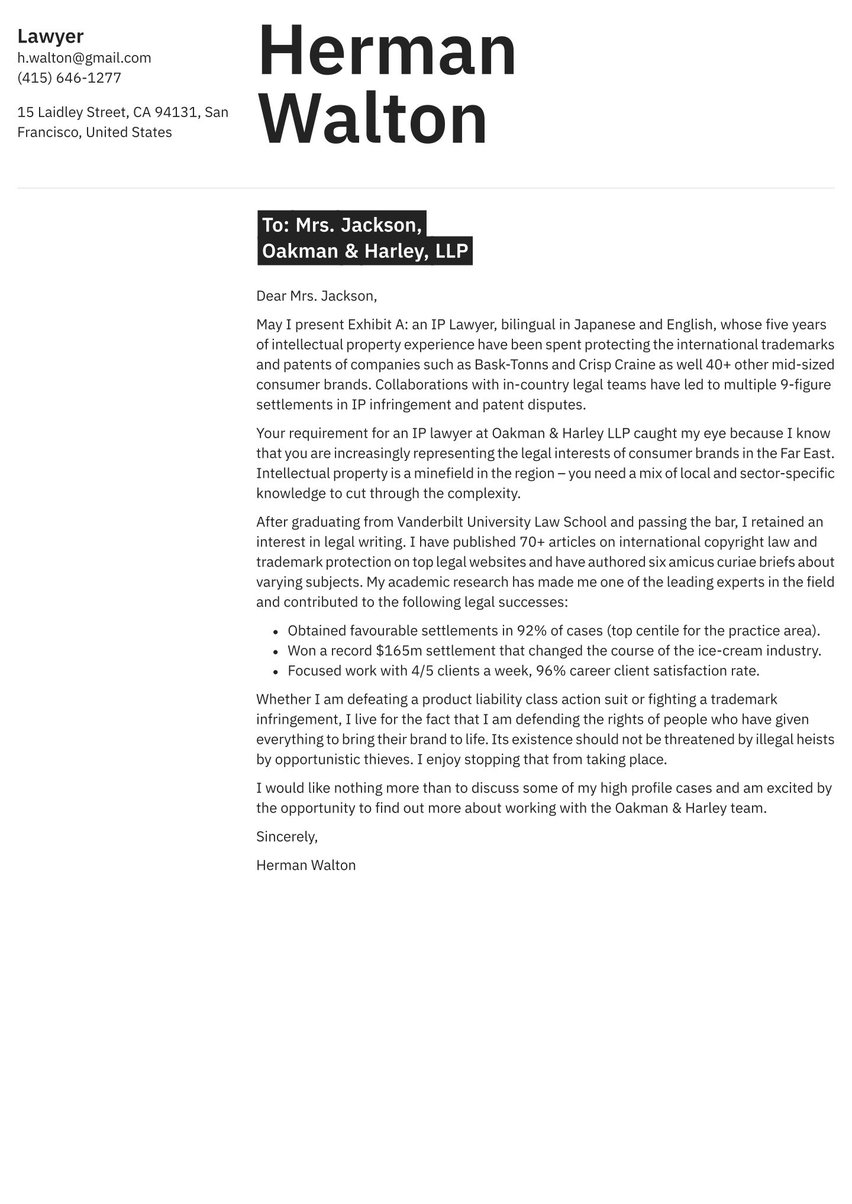Gaining experience as a teaching assistant is a great way to start your journey into the rewarding field of education. From this position, you’ll be able to gain the classroom management and lesson plan skills recruiters look for when hiring new teachers. Plus, you’ll be able to advance in the field even before you have years of experience.
Whether you’re planning to work in your home country or abroad, working as a teaching assistant is an enriching experience both for you and your pupils. So how do you show a principal that you’re the ideal candidate for their learning environment? You’ll need the perfect cover letter, of course.
As a source of ideas, you can check out our teacher assistant cover letter example in the header of this article. It's an editable cover letter example that you can quickly change in our builder. Simply click on "edit cover letter" and you will be good to go in five minutes!
Along with that professional cover letter example, this guide will:
- Explain why a cover letter is a necessary part of an application in virtually any situation
- Break down the tried-and-true framework for a smooth and concise letter
- Explore the power of storytelling and how it can make a difference in your application
- Help you avoid common mistakes made by other candidates for teaching assistant positions
If you haven’t yet created a great resume, that’s a good place to start. For inspiration, you can check out our teacher assistant resume example linked directly below. And if you want to tailor your resume even further, take a look at our collection of education-specific resume examples.
Teaching assistant cover letter writing tips
What is a cover letter?
While a resume is a useful tool in landing a job, it’s ability to show off your personality and unique perspectives is limited to just a few lines of profile summary. The rest is a rather factual account of your work history and education with little room for explanation or expansion.
That’s where your cover letter comes in. This one page document, roughly 200 to 400 words, is the perfect place for you to make a great first impression. Here, you have the chance to give specific examples and anecdotes about your work experience and address any questions your resume may pose like gaps in employment history. Your goal is to make a personal connection with the hiring manager and highlight the achievements and skills that are most relevant to the job description.
What if the job description doesn’t specifically mention a cover letter?
While it might seem tempting to save yourself the trouble and submit an application without a cover letter, you’d be making a big mistake. Unless an application specifically asks you NOT to include a cover letter, it’s always best to write and send one. Don’t throw away this major opportunity to make a stellar first impression.
To keep your cover letter looking professional and sharp, there are a few formatting guidelines that can make all the difference. In general, it’s best to stick to trusted sans serif fonts like Georgia, Helvetica or Arial with a size between 10 and 12 pt. You can get even more in-depth formatting tips as well as free example sentences in this overall guide on cover letters.
Maximizing your job application’s chances
During the job search, it’s important to give each job application the best chance of success. Positions are competitive, especially among teaching assistants whose employment depends on a school district's personnel budget. When funds run low, supplementary positions are often the first to go.
If this is one of your first teaching experiences, you may be up against other candidates with much more impressive resumes. That’s why so many job applications ask for cover letters – they help level the playing field by giving each candidate the chance to express what makes them unique and ideal for the position. Why would you give up that opportunity to make a case for yourself?
The importance of custom-tailoring your cover letter to each job listing
One big mistake that many job seekers make is not tailoring their cover letter to the actual job posting they’re applying to. Unfortunately for these candidates, hiring managers often disregard these generic cover letters that don’t address the needs of the school system or specifics of the position.
While you may not have worked in that specific position yet, you can adjust the experience you do have to match the skills needed in the role. For example, if you’re applying to an elementary school position, it makes more sense to focus your cover letter on the behavior management strategies you used with middle schoolers than the advanced physics assignments you created for a class of graduating seniors.
Best format for a teaching assistant cover letter
Some candidates fear the cover letter writing process because they believe the document lacks structure. Luckily for you, you’ve got the magic formula. In this section, we’ll break down the pieces of a cover letter into easy-to-follow steps. What’s more, this framework remains the same across industries and positions so you can put it into use throughout your career.
The format for a teaching assistant cover letter should contain these key components:
- The cover letter header
- The greeting / salutation
- The cover letter introduction
- The middle paragraphs (body)
- The ending paragraph (conclusion)
- The sign-off.
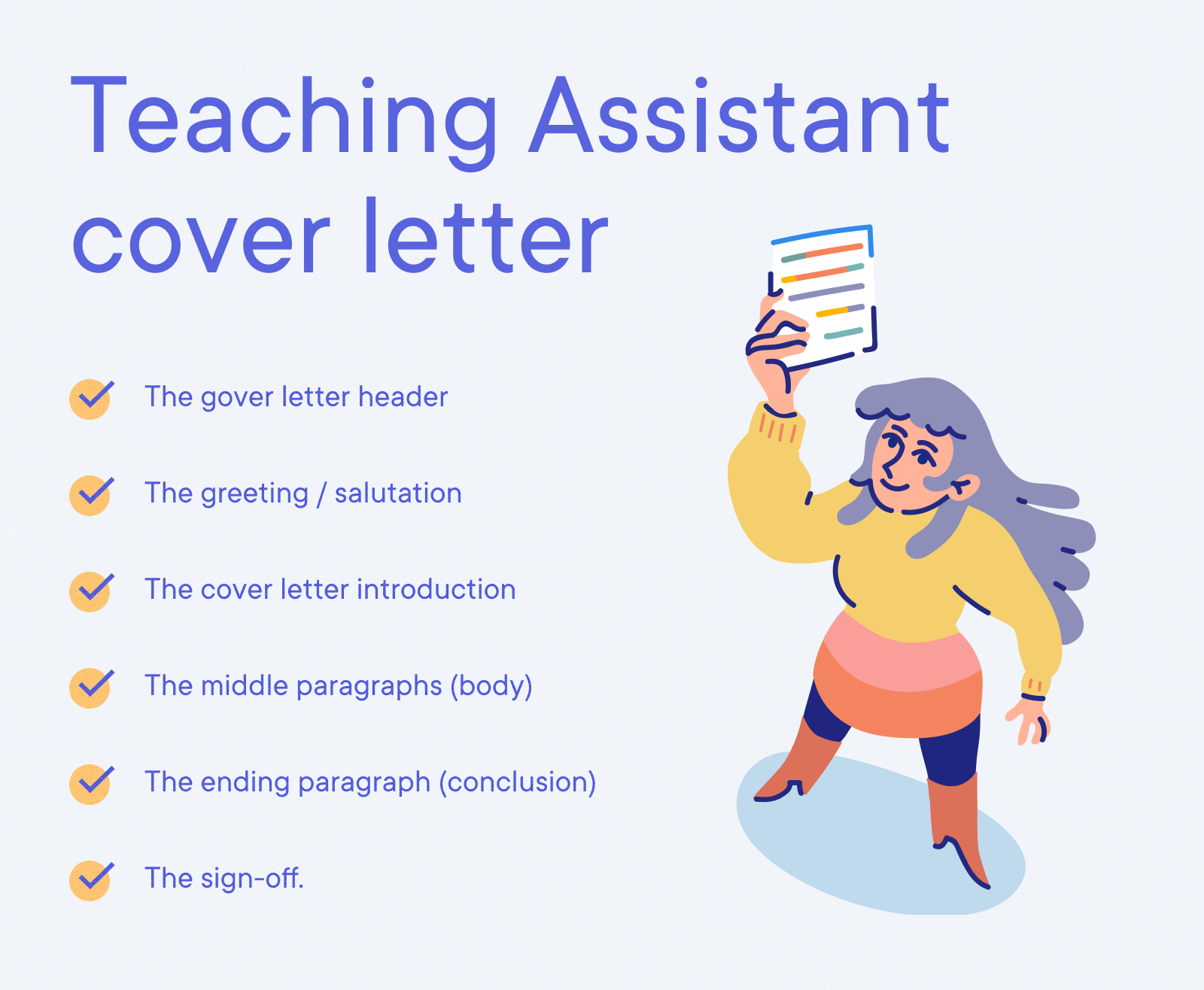
Dear Ms. Naysmith,
As someone whose mild dyslexia remained undiagnosed throughout their childhood, I know how it feels to struggle silently. Every child has their own issues, big or small, and my role as an elementary teaching assistant is to use my skills and empathy to smooth their progress.
Goodson’s track-record of improving outcomes for students with learning differences is exemplary and I would love to bring my skills to your teaching assistant team. I have spent three years assisting students in Grades 3-5 and understand the importance of positive reinforcement and individual engagement in these formative years.
Currently completing my bachelor’s degree in elementary education on a part-time basis, I aspire to become an elementary teacher in a couple of years, but I relish the one-on-one aspects of the teaching assistant role that few classroom teachers have the time to indulge in. I have worked as a substitute teacher on more than 30 occasions.
I hope that the following student-centric achievements might show how I would fit in:
- Accompanied 25 special needs students on their annual summer camp.
- Created a literacy strategy for how teaching assistants work with dyslexic students.
- Won a state award for my work around classroom inclusion methods in our district.
I speak fluent Spanish and know that occasionally talking to younger students in the language that they speak at home makes a difference in how they feel in the classroom.
The job description mentioned that you value innovation. I would love the opportunity to tell my story at an interview and show you how my innovations come from a place of genuine understanding and emotional connection.
Sincerely,
Alex Hughes
Cover letter header
Your cover letter header serves an important role in identifying your document and making sure that your phone number and contact information stays at the hiring manager’s fingertips. Many school districts have whole teams of HR professionals who review applications and evaluate them before passing them along to individual principals. Your header makes sure that everyone who reads your cover letter knows who it belongs to and how they can get in touch.
Goal of the cover letter header: Label the document as belonging to you and keep your contact information handy no matter who comes across your letter.
Align document styles!
While the header’s primary function is in identification, it also offers an opportunity to add professional formatting to your cover letter. This is likely the only place you’ll be able to use color or text flourishes on what can sometimes turn into a rather plain looking sheet of paper.
Cover letter templates can make things simple by offering a polished look without much hassle. To come across as even more put together, try aligning the document styles of your resume, cover letter and other application materials.
Cover letter greeting
While it may only contain a few words, your greeting is an essential piece of your letter. This is where you’ll set a positive and respectful tone to get your letter off to a good start. In most cover letter examples, you'll notice that the application letter avoids generic greetings such as "to whom it may concern" and tries to address a specific person. Education is a fairly formal field so “Dear” followed by the recipient's name is the most appropriate salutation, using the gender title and last name: "Ms. Black" or "Mr. Grey."
Goal of the cover letter greeting / salutation: Properly address the letter recipient and establish a respectful tone.
The importance of names and addressed greetings.
It’s been scientifically proven that our brains respond positively to hearing our own names. That’s one great reason to address your letter to an individual principal or hiring manager if you can (which is what you often find in cover letter sample writing). Beyond that, a personalized letter helps to create a connection and rapport between you and the reader.
If you can easily find the name of the hiring manager with a quick email or phone call, then make sure to use it in your greeting. However, in many large school districts hiring is done by a team in a central office. In this case, it’s not necessary to go to extreme lengths to address your letter. “Dear Hiring Manager” will work, or even better the name of the school district and a collective noun like “Dear CCPS Hiring Team.”
Dear Ms. Naysmith,
Cover letter introduction
Now that you’ve got the header and greeting out of the way, it’s time to get into the real business of writing your cover letter. Your introduction is the best place to make a great first impression and hook the reader with information that makes them want to continue into the body. An energetic anecdote, bold statement or interesting introduction to yourself can all do the trick. You’ll want to keep err on the side of professional, rather than eccentric, while making sure that the reader can feel your passion for teaching.
Goal of the cover letter introduction: Grab the reader’s attention in a unique and exciting way and encourage them to keep reading into the body section.
As someone whose mild dyslexia remained undiagnosed throughout their childhood, I know how it feels to struggle silently. Every child has their own issues, big or small, and my role as an elementary teaching assistant is to use my skills and empathy to smooth their progress.
Cover letter middle section (body)
The body section of your teaching assistant cover letter is where you’ll be able to get into the details of your biggest accomplishments, strongest abilities and reasons why you think you’re a great fit for the position. Little anecdotes are one of the best ways to illustrate not only what you did in the past but how it will be applicable to the future. You can use the STAR method to explain a Situation, the Task at hand, your Action and the positive Result it caused. Just make sure to keep these examples brief so that the reader doesn’t lose interest.
You can simplify things even further by dividing your body into two subsections. In the first, use the STAR method to talk about past achievements. The second is dedicated to the skills and the contributions you plan to make in this new school or position.
Goal of the cover letter body: Explain what you’ve accomplished and learned in previous roles and how it directly relates to the skills you will bring into this new position.
I hope that the following student-centric achievements might show how I would fit in:
- Accompanied 25 special needs students on their annual summer camp.
- Created a literacy strategy for how teaching assistants work with dyslexic students.
- Won a state award for my work around classroom inclusion methods in our district.
I speak fluent Spanish and know that occasionally talking to younger students in the language that they speak at home makes a difference in how they feel in the classroom.
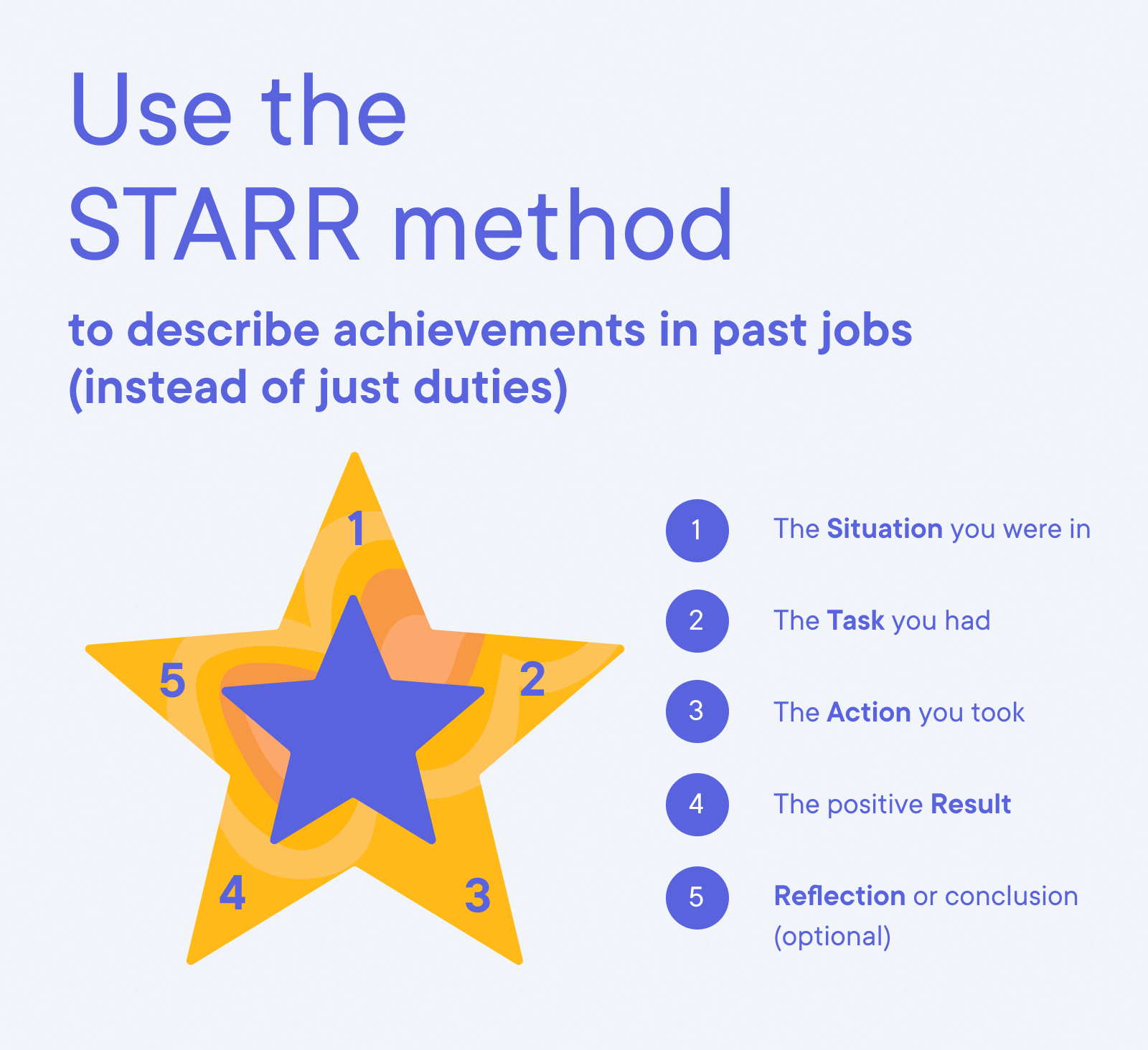
How to close a teaching assistant cover letter (conclusion and sign-off)
Now it’s time to finish off your letter in a polite and professional way that will make any principal feel lucky to have you as part of the team. For that, you’ll need an effective Call to Action that conveys your enthusiasm and positivity for the role and encourages the hiring manager to get in touch. You may opt to leave your phone number or other contact information in this section as well before closing with a signature like “Sincerely” “Best” or “Best Regards.”
Goal of the closing section: End your letter on a positive and professional note, encourage a hiring manager to contact you via an enthusiastic Call to Action.
The job description mentioned that you value innovation. I would love the opportunity to tell my story at an interview and show you how my innovations come from a place of genuine understanding and emotional connection.
Sincerely,
Alex Hughes
Writing psychology: cover letter tools and strategies
As a future teaching assistant, there are some key qualities you’ll want your cover letter to convey.
- Flexibility and adaptability: Teaching assistants are often asked to take on extra tasks and adapt to the schedules and needs of the regular classroom teachers. The ability to remain flexible and adjust to these situations is a great thing to highlight in your cover letter.
- Ability to follow instructions: Since you’ll often be working alongside more experienced teachers, it’s important that you demonstrate the ability to support the needs of other staff and complete tasks as they are asked of you.
- Classroom management: This is one of the biggest challenges for all new teachers regardless of the class’s size, age or subject matter. Highlighting times in which you’ve effectively managed a rowdy classroom can help bring your cover letter to the top of the pile.
- Enthusiasm and positivity: A love of teaching is one of the most important qualities principals look for in new staff. Extra points if you can show the ways in which your positivity makes you a better teacher.
Adults love stories, too
If you’ve had some experience teaching young children, you probably know that storytime is a beloved activity both at school and at home. A great story sparks a kid’s imagination and keeps them wondering what happens next.
Turns out, the same is true for adults. Neuroeconomist Paul Zak spent years researching our brains’ chemical reactions when we hear a fascinating tale. He found that stories make us more likely to empathize with others and even help them out.
You’ve probably seen the power of this in the advertising world (just think of a touching commercial), but it can also have an application in the process of writing your cover letter.
As a teaching assistant, you likely have several experiences that come to mind about moments where children surprised you or situations that made you step fully into your role. Before writing the body of your cover letter, spend some time evaluating these memories and developing them into one-paragraph stories that both capture the emotion of the situation and your professional response. This is another great way to express your passion for teaching.
Stories like these serve not only to hold a hiring manager’s attention, but also to prove that you have the qualities you say you do. Any teaching assistant can say that they are patient, but the months you spent teaching a preschooler with a learning disability how to read demonstrate that you truly have that quality.
Which anecdote to pick?
In a classroom, each day is a new experience. You likely have many examples of times things didn’t go right and required you to step up and adapt to the situation. So which anecdote do you pick?
The principle of belief matching states that people are more likely to respond positively to your message if they first believe you understand their problem. Keeping this idea in mind, you should aim to highlight situations which illustrate not only how you solved problems in the past but how you can become invaluable in this new position. Any insight into the school’s unique challenges or situation can help you portray yourself as the right candidate.
Teaching assistant cover letter format and common mistakes
- Generic letters: It bears repeating that a generic cover letter is one surefire way to dash your chances of landing a dream position. Not only is a copy-paste cover letter sample boring for the hiring manager to read, it also shows that you didn’t take the time to research the job, school or district. Make sure to tailor each letter to the specific position you’re applying for.
- Typos and grammatical errors: A letter containing spelling mistakes and incorrect grammar won’t get you far in any field, let alone education. Make sure to use spell check and have a friend proofread your letter before you submit.
- Formatting mistakes: Your aesthetic presentation is one of the most important parts of your cover letter. Make sure to keep your fonts, colors and headers polished and error-free. Professional formatting tools can help.
- Confidential information: Make sure to leave any names or personal data about students and their families out of your anecdotes. Personal data in a cover letter makes a principal wonder if they can trust you with their students’ information.
Key takeaways
- Your cover letter is an essential part of a complete job application. Unless you’re specifically told NOT to write one, you should always include one to increase your chances of landing the position.
- Make sure to adjust your cover letter to each school and position you apply for. A generic copy-paste letter is easily spotted and disregarded by a hiring manager.
- Follow the tried and true cover letter structure to maintain readability and give yourself ample space to discuss your achievements and skills.
- Use the power of a story to build empathy with a principal or hiring manager and effectively show why you’re the right candidate for their school.
- Avoid formatting issues that can seriously hurt your chances of success. Use professional formatting tools like resume.io’s cover letter templates and builder.
- Use ready-made cover letter examples as ways to save yourself time and quickly edit per-made text.
Create the perfect cover letter in no time with resume.io. No guesswork, just get out there and start teaching!



